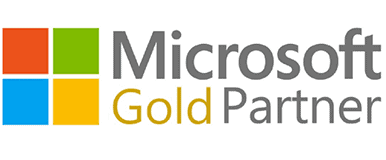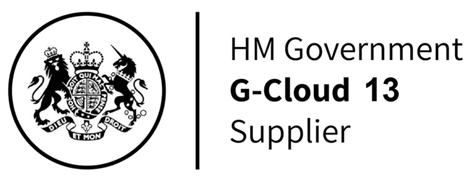Ensure Business Success With Managed Service Providers
Join our community who have learnt how to deploy technology faster and have been enabled to disrupt their sector to deliver better customer service and growth.
Are You Reluctant to Switch Your Managed Service Provider Because You Fear a Turbulent Transition?
Decisions, decisions. Each year, when contracts are up for renewal, organisations are often faced with a conundrum, whether to stick with the outsourced Managed Service Providers they already have or find an IT partner elsewhere.
The main consideration for outsourcing to a different IT service provider is the hope for more efficient processes and improved service quality levels. As with any breakup, change can be awkward. Disincentivised and perhaps resentful, the outgoing partners may be unwilling to share their knowledge and insights with their replacements. Resistance to change may even take hold within your workforce. So how can you ensure a seamless and successful transition of Managed Service Providers? Stick around to find out.
As businesses continue to expand and grow, they are increasingly looking for ways to outsource parts of their operations. While cost reduction and efficient delivery are still important factors, organisations are taking a greater interest in value-added services such as analytical capabilities, access to better talent and technology, continuous process improvements, re-engineering and innovation.
Businesses seek Managed Service Providers for their top-tier skill sets, proficiency in Business Process Automation, and ability to increase current capacity and tailored technology solutions. In today’s tech-centric economic landscape, collaboration with third-party providers is a recipe for better customer satisfaction, cost-efficiency and improved Service Lifecycles.

Why Does Transition Management Matter?
In the digital-first era, you either disrupt or be disrupted. Companies are under more pressure than ever to innovate, modernise and upgrade their systems, which is why agile and adaptable specialists are needed to ensure continuous improvement. Without them, you’re getting left behind. The job of the Managed Service Provider is to align their expertise and resources with the organisation’s strategy and vision. This can be challenging in the present climate, where companies are prone to having multi-sourcing agreements and contracts in different countries. Good governance mechanisms are essential to minimise disruption during times of transition.
For a smooth transition of partnerships, companies need to hit the ground running. To do this, they must first be aware of the challenges and risks involved with switching partners.

The Challenges
Information Deficit
Perhaps your understanding of your existing processes is limited? If so, your new provider may have to work with relatively little information, which could impact the level of service they can deliver, irrespective of their capabilities.
Lack of Knowledge Sharing
It is vital that the outgoing provider cooperates, as they will know more about your systems than your in-house team. They must leave you with a solid grasp of your processes, operations, architecture, security, and resources. Make it worth their while!
Lack of Strategy
When a contract is switched in a rush without clear planning, knowledge sharing or training the new Managed Service Provider will struggle to get to grips with the systems at their disposal. This can lead to significant problems and disruptions down the line, as the new provider tries to make sense of the old system and figure out how to best use it. In some cases, this can even lead to service outages and downtime.
Timeframe problems
If the outgoing team is uncooperative, the entire transitional process will be jeopardised. If the switchover takes place mid-contract, it could delay other projects. Tight timelines and rushed transitions reduce the chance of successful planning and execution.
Lack of Collaboration
While it may be awkward, the outgoing and incoming providers have to work together, even if they have different motives. It is vital to foster a culture of collaboration and reward for good work and to ensure that your teams have the right skill sets to perform their tasks.
Ensuring a Smooth Transition
To ensure a successful switch of providers, effective and carefully delivered planning is needed before to the transition. There must be a clear service strategy, service design, and service operation as well as effective relationship management. The transition team must have a solid background in managing transitions.
Discover What We Do

Learning the Knowledge
Knowledge transfer is a critical step in any transition and obtaining a baseline of the existing environment is the first step. The outgoing team may or may not be under contractual obligation to co-operate with the internal team or the incoming provider in the knowledge transfer process. Therefore, the onus is on the organisation or the internal team to facilitate this. To ensure a smooth transition, all relevant information about the current environment must be shared with the incoming service provider. This includes data about software and hardware configurations, network architectures, business processes, and so on. Without this information, it would be very difficult for the incoming team to hit the ground running and provide uninterrupted service. Therefore, obtaining a baseline of the existing environment is a crucial first step in any transition.
Below are some of the necessary steps to facilitate a successful knowledge acquisition:
- Retain and incentivise
As aforementioned, when dealing with an outgoing IT partner, make their final weeks or months with you worth their while, both to ensure critical knowledge retention and for the sake of goodwill. - Best Practices
One way to get through this phase seamlessly is to encourage the use of templates, questionnaires, best practices and checklists. By providing employees with these tools, you can help them work more efficiently and avoid mistakes.
To ensure a smooth transition with minimal errors and downtime, a Service Provider should: - Implement Acquisition templates
- Use checklists to ensure consistency and reduce the risk of human error
- Standardise processes and establish a set of best practices
- Have an effective Risk Management process in place.
- Map out the system infrastructure and applications
- Have a defined set of acceptance criteria before signing off on the knowledge transfer – the process should involve reviews for Work Instruction, Architecture Standard Operation Procedures documentation before signing off.
Your internal team must make sure that they retain the knowledge given to them. The best way to do this is to store it somewhere accessible, like an online knowledge repository portal, for instance.
Service Management
Good management and transition oversight are integral to the success of a switchover. Service Level Objectives must be clearly defined in contracts. Equally, everyone must have well-defined roles and duties throughout the handover. Effective communication is key to ensuring success, particularly if the transition is hostile. To guarantee operational stability, mock drills and intensive training sessions are vital.
Sustaining Momentum Post-Transition
Once the handover is completed, the sustenance team takes control. Their job is to stabilise operations to meet performance targets and stay on budget. To ensure continuous improvement, a Service Improvement Plan will be needed to ensure efficiency and productivity in the long term.
Service Level Agreements (SLAs)
Managed Service Providers need a clear understanding of what’s expected of them. Otherwise, goals and standards become arbitrary, which can lead to confusion, demoralisation and low productivity. For any long-term third-party contract, SLAs with Key Performance Indicators are needed to evaluate and measure the level of service the provider is delivering. There has to be a clear criterion for success, where providers know and share your company’s long-term aims.

The Benefits of Business Process Automation in Transition
Automation can make a transition process happen more quickly and cost-efficiently. Did you know automation can save your organisation as much as 90% on maintenance costs? Automated tools reduce the risk of system failure in the long term. Handy automation resources that accelerate the transition process include:
- Knowledge Acquisition Process repositories are essential for any organisation that relies on knowledge workers. They provide a place for knowledge workers to store and share the technical details of their work, and they can be used to track and measure the performance of knowledge workers. Knowledge Acquisition Process repositories can also be used to identify and resolve errors in knowledge work. By storing the technical details of each domain in a Knowledge Acquisition Process repository, organisations can ensure that their knowledge workers have access to the latest information and can resolve errors quickly.
- Handover checklists help to ensure that all tasks associated with a transition are completed in accordance with the Service Level Agreement (SLA). By providing a detailed list of all required tasks, along with deadlines and expectations, handover checklists help to ensure that everyone involved in the transition knows their responsibilities. In addition, handover checklists can help to identify potential problems or areas of concern before they become blockers. By taking the time to review and update handover checklists on a regular basis, organisations can ensure that transitions are smooth and successful.
- The Service Assurance Kit comprises a set of activities and tools used to ensure consistency of service across projects. The kit helps to clarify customer expectations, identify potential risks and issues, and establish an agreed service delivery plan. By housing complete details about customer setup, required data availability at the site, and site awareness of the delivery team, the kit ensures that everyone knows their roles and responsibilities. This helps to prevent misunderstandings and miscommunication and ensures that the project is delivered smoothly and efficiently. In short, the Service Assurance Kit is an essential tool for ensuring high-quality service delivery.

Summary
Changing from one Managed Service Provider to another can be challenging and uneasy. You must be certain that your new IT services provider has the tools, methodology, skills and resources needed to make your shakeup worthwhile. You must have a clear long-term vision and checks and balances to ensure your goals are objectively defined and a clear transition plan. Your new outsourced providers must have an agile ethos that ensures continuous improvement, and your outgoing partners must be willing to deliver a seamless and efficient knowledge transfer.


